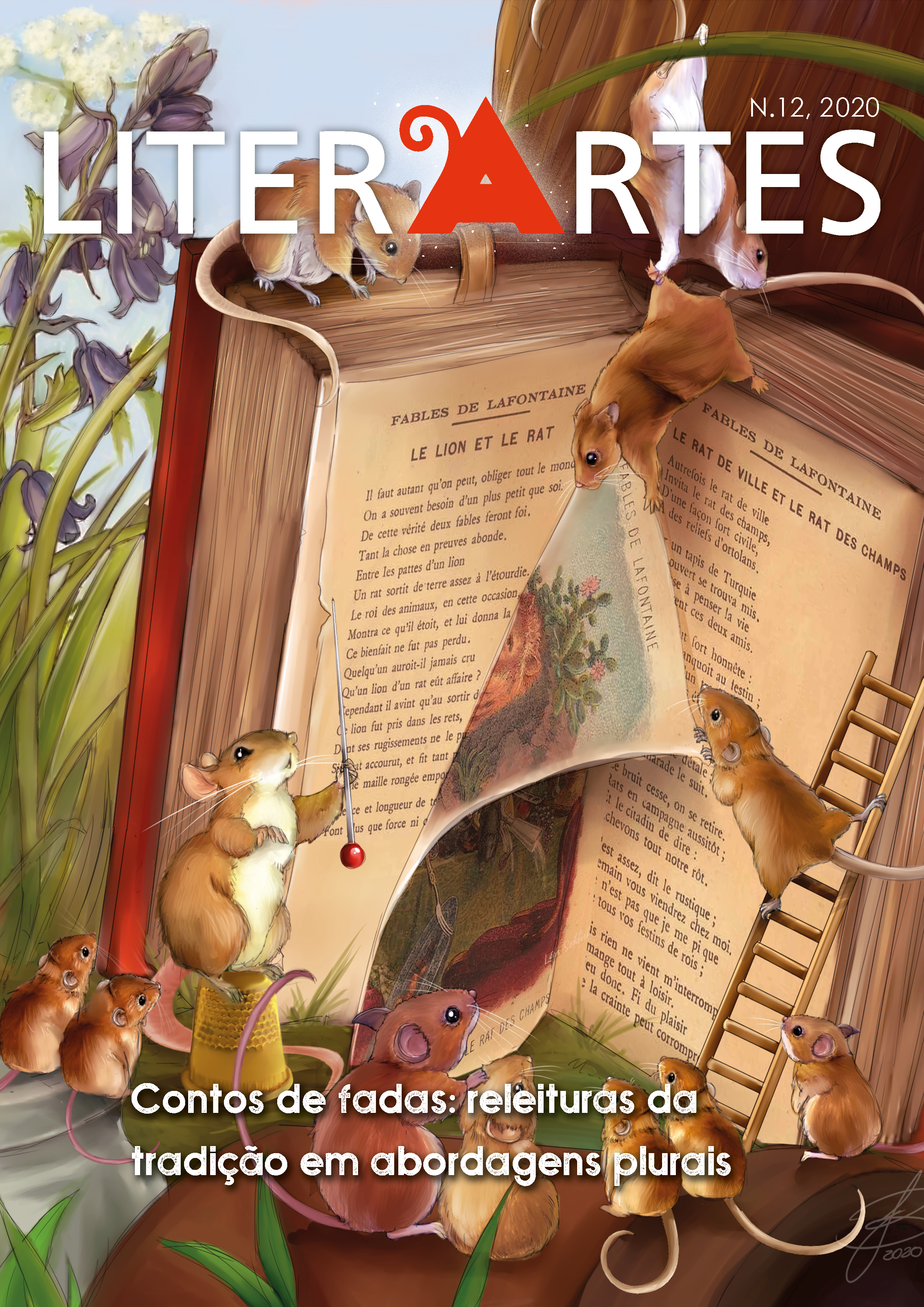Manuscript and Print Media Differences Shapers of the 1470s (Proto) Fairy Tales Cirino d’Ancona’s Liombruno and Vindalino da Spira’s Lionbruno
DOI:
https://doi.org/10.11606/issn.2316-9826.literartes.2020.176629Keywords:
fairy tale, liombruno, lionbruno, manuscript, printed mediaAbstract
This special issue of Literartes is devoted to fairy tales in different media. I have contributed the following miniature account of a European proto-fairy tale, which appeared in two competing media, a 1470 hand-produced manuscript and a 1476 machine-made printed booklet. The manuscript medium had a limited reach in its audience; the printed booklet, one of a quondam print run of many hundred, needed to incorporate the expectations of a much larger population in order to be saleable. Thus, it happened that the same plot, when produced in two different media in the 1470s, tells a different story with respect to God, money, and women.
References
BOTTIGHEIMER, Ruth B. “Cinderella: The People’s Princess”. In LATHEY, Gillian et al (ed.). Cinderella. Detroit: Wayne State University Press, 2016, p. 27-51.
BOTTIGHEIMER, Ruth B. Magic Tales and Fairy Tale Magic from Ancient Egypt to the Italian Renaissance. Basingstoke: Palgrave Macmillan, 2014.
BOTTIGHEIMER, Ruth B. “Upward and Outward: Fairy Tales and Popular, Print, and Proletarian Culture, 1550-1850.” In Elore, n. 17, v. 2. Joensu (Finland): The Finnish Folklore Society, 2010, p. 104-120. Disponível em 16TUhttp://www.elore.fi/arkisto/2_10/bottigheimer_2_10.pdfU16T. ISSN 1456-3010.
BOTTIGHEIMER, Ruth B. “Fairy Godfather, Fairy-Tale History, and Fairy-Tale Scholarship: A Response to Dan Ben-Amos, Jan Ziolkowski, and Francisco Vaz da Silva”. In BEN-AMOS, Dan (ed.). Fairy-Tale Traditions between Orality and Literacy. Journal of American Folklore, 2010, p. 447-496.
BOTTIGHEIMER, Ruth B. Fairy Godfather: Straparola, Venice, and the Fairy Tale Tradition. Philadelphia: University of Pennsylvania Press, 2002.
BOTTIGHEIMER, Ruth B. “Fertility Control and the Birth of the Modern Fairy Tale Heroine”. In Marvels & Tales, n. 14, v. 1, 2010, p. 64-79.
D’ANCONA, Cirino. “Liombruno”. In MANETTI, Roberta; ZABAGLI, Franco (Ed.). I Novellieri Italiani. Rome: Salerno Editrici, 2002 [1470; 1476].
D’ANCONA, Cirino.Hystoria d’un mecadante pisano. Bolonha: Bazaliero de’ Bazalieri, 1490 [Disponível na Biblioteca Houghton, em Harvard; 8 p., 22 cm].
FRANCE, Marie de. Lais de Marie de France. Transc. e anotações de Laurence Harf-Lancner. Ed. de Karl Warnke. Paris: Livre de Poche, 1990 [1170].
HARF-LANCNER, Laurence. Les Fées au Moyen Âge – Morgane et Mélusine: La Naissance des Fées. Paris: Champion, 1984.
McLUHAN, Marshall. The Medium is the Message. New York: Random House, 1967.
STRAPAROLA, Giovan Francesco. Le Piacevoli Notti. Ed. Donato Pirovano. Rome: Salerno Editrice, 2000 [1551; 1553].
SPIRA, Vindalino da. “Lionbruno”. In MANETTI, Roberta; ZABAGLI, Franco (Ed.). I Novellieri Italiani. Rome: Salerno Editrici, 2002 [1470; 1476].
Downloads
Published
Issue
Section
License
Copyright (c) 2020 Paulo César Ribeiro Filho; Ruth B. Bottigheimer

This work is licensed under a Creative Commons Attribution-NonCommercial 4.0 International License.
Autores que publicam nesta revista concordam com os seguintes termos:
- Autores mantém os direitos autorais e concedem à revista o direito de primeira publicação, com o trabalho simultaneamente licenciado sob a Licença Creative Commons Attribution que permite o compartilhamento do trabalho com reconhecimento da autoria e publicação inicial nesta revista.
- Autores têm autorização para assumir contratos adicionais separadamente, para distribuição não-exclusiva da versão do trabalho publicada nesta revista (ex.: publicar em repositório institucional ou como capítulo de livro), com reconhecimento de autoria e publicação inicial nesta revista.
- Autores têm permissão e são estimulados a publicar e distribuir seu trabalho online (ex.: em repositórios institucionais ou na sua página pessoal) a qualquer ponto antes ou durante o processo editorial, já que isso pode gerar alterações produtivas, bem como aumentar o impacto e a citação do trabalho publicado (Veja O Efeito do Acesso Livre).



